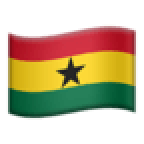One of such changes has to do with the number of regions since the country gained independence in March 1957.
Ghana’s total regions used to be just five during the early post-colonial era. It later increased to 10 and now it is 16.
After Ghana’s independence, the country was divided into five units; namely Eastern, Western, Ashanti, Volta and Northern regions.
Later the Brong-Ahafo region was created from the Ashanti region in 1959 to become the sixth region.
Then, in July 1960, the seventh region was birthed when the Upper Region was carved out of the Northern Region.
)
Central Region was also subsequently created out of the Western Region and the Greater Accra region from the Eastern region, bringing the number of regions to nine by 1982.
A year later, Ghana’s regions moved to 10 after the Upper Region was split into Upper East and West Regions.
It remained so for more than three decades, until six new regions were recently added.
The six new regions were created following a successful referendum held last year in all involved areas.
To this end, the Savannah, North East, Bono East, Ahafo, Western North and Oti regions were birthed.
In February, President Akufo-Addo met with chiefs and other stakeholders to announce the capitals of the newly created regions.
Here are all the regions in Ghana currently and their capitals:
REGION CAPITAL
Oti Region – Dambai
Bono East Region – Techiman
Ahafo Region – Goaso
Bono Region – Sunyani
North East Region – Nalerigu
Savannah Region – Damango
Western North Region - Sefwi Wiawso
Western Region – Sekondi
Volta Region – Ho
Greater Accra Region – Accra
Eastern Region – Koforidua
Ashanti Region – Kumasi
Central Region - Cape Coast
Northern Region – Tamale
Upper East Region – Bolgatanga
Upper West Region - Wa


)
)
)
)
)